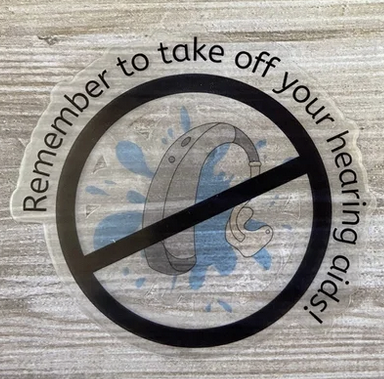By David Halbout
You never know how what you’ve learned could one day be useful. As a boy growing up in France we had home economics classes. We all learned to sew, cook, knot macrame, and use a hammer. I was particularly good with these crafts.
When the pandemic hit and the first lockdown started, this surreal moment felt like a set of parentheses for my wife and me. We are both creators and design for a living. I was painting birdhouses in the Mondrian style, thinking this won't be too long, let's enjoy it.
When we realized things were actually very bad and hospitals were missing PPE (personal protective equipment), we jumped into action. We seized this opportunity to use our creativity to help our community. I wanted to design an adjustable strap, suitable for heads of all sizes. To solve the problem I used macrame—knot, knot, bead—my early lessons came back. We made masks around the clock to donate to New York City hospitals.
The top mask shows the long head loops that help keep hearing aids from shooting off the ear, and the bottom mask has a lanyard for hanging the mask around the neck when not in use.
This adjustable elastic was designed for those with special needs, such as those with autism and wearers of hearing aids. The principal is simple: One strap goes around the neck, the other one around the head. The problem was the bottom elastic—it gets caught in the hearing aids and the elastic turns into a slingshot.
With our version, the elastic is long enough so that it will not touch the ears and then can be adjusted to the right fit. This became our most popular mask. We discovered this mask was being adopted by the general public, even though it was initially designed for the special needs audience. Usually it is the other way around.
We’ve gotten feedback from people from all walks of life. A teacher told us, “Your mask is a lifesaver, my glasses do not fog.” A businessman who must fly weekly preferred our mask for the snug fit. A campus security chief bought a pack for his team because they can wear it all day long without their ears becoming sore. A professional poker player loved the filter pocket.
We provided masks to the Deaf and Blind Community Access Network of New Jersey for a fundraiser. The artwork of an artist who is deaf and blind, Jon Gabry, was printed on the fabric. This experience brought new meaning to my design career.
One morning I witnessed a scene from my car, stopped behind a school bus. A child was running toward the bus. His mask, hanging on one of his ears, started swinging and decided to fly free, ending up in a puddle. I laughed and felt badly for this poor little guy who didn’t start his day the best possible way.
It became an inspiration. Here my macrame skills came in handy again. After playing with threads I figured out how to make it a seamless transition between the ear loops and lanyard. The adjustable ear loops and a built-in lanyard are made from one continuous elastic. When not on the face, the mask rests safely on the chest using the lanyard, no more dropping the mask accidentally or being without one.
Covering your face is just a matter of seconds, like putting glasses on. An adjustable nose bridge and filter pocket complete the mask. We donated masks with these built-in lanyards to our neighborhood schools to both students and teachers.
I appreciate how this journey has made me grow as a designer, and I love using what I learned so long ago to help others.
David Halbout co-founded French Fix in New Jersey with his wife Nathalie d’Idris. For more, see frenchfixllc.com or their Etsy store.







A quiet activist is using videos to promote science fact over noise fiction.